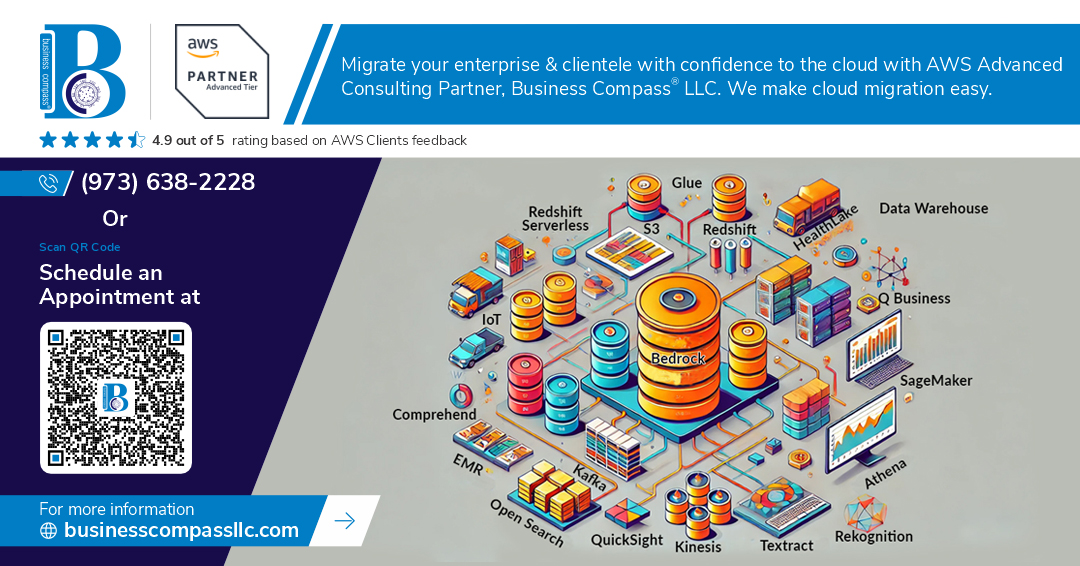Imagine you’re an architect, tasked with designing the blueprint for a massive skyscraper. Now, picture that skyscraper as your data warehouse, and the blueprint as your schema design. 🏗️ In the world of data management, two titans stand tall: Star Schema and Snowflake Schema. But which one is the right foundation for your data empire?
As businesses grapple with ever-growing volumes of data, the choice between Star and Snowflake schemas can make or break their analytics strategy. Will you opt for the simplicity and speed of Star, or the flexibility and efficiency of Snowflake? 🤔 The stakes are high, and the wrong decision could lead to sluggish queries, bloated storage costs, or worse – insights that arrive too late to be actionable.
In this deep dive, we’ll unravel the mysteries of Star and Snowflake schemas, exploring their structures, comparing their performance, and examining real-world implementations. Whether you’re a seasoned data architect or a curious business analyst, buckle up for a journey through the heart of data warehouse design. Let’s illuminate the path to choosing the perfect schema for your data needs!
Understanding Star Schema
Key components of Star Schema
A Star Schema consists of three main components:
- Fact Table
- Dimension Tables
- Foreign Key Relationships
| Component | Description |
|---|---|
| Fact Table | Central table containing quantitative data |
| Dimension Tables | Surrounding tables with descriptive attributes |
| Foreign Key Relationships | Connect fact table to dimension tables |
The fact table contains measurable, quantitative data about business processes, while dimension tables provide contextual information for analysis.
Benefits of Star Schema design
Star Schema offers several advantages for data warehousing:
- Simplified queries
- Improved query performance
- Easier to understand and navigate
- Efficient for OLAP operations
- Supports fast aggregations and drill-downs
Ideal use cases for Star Schema
Star Schema is particularly well-suited for:
- Sales and marketing analytics
- Financial reporting
- Supply chain management
- Customer behavior analysis
- Inventory management
Limitations of Star Schema
Despite its benefits, Star Schema has some drawbacks:
- Limited flexibility for complex relationships
- Potential data redundancy in dimension tables
- Challenges in handling slowly changing dimensions
- May require more storage space compared to normalized schemas
Now that we’ve explored the Star Schema, let’s move on to understanding the Snowflake Schema and how it differs from the Star Schema design.
Exploring Snowflake Schema
Core elements of Snowflake Schema
The Snowflake Schema is a complex dimensional modeling technique that extends the Star Schema by further normalizing dimension tables. Its core elements include:
- Fact Table: Central table containing quantitative data
- Dimension Tables: Normalized tables that branch out from the fact table
- Sub-Dimension Tables: Additional tables that further normalize dimension tables
Here’s a comparison of Star and Snowflake Schema structures:
| Feature | Star Schema | Snowflake Schema |
|---|---|---|
| Normalization | Denormalized | Normalized |
| Complexity | Simple | Complex |
| Join Operations | Fewer | More |
| Data Redundancy | Higher | Lower |
Advantages of Snowflake Schema
- Reduced data redundancy
- Improved data integrity
- Efficient storage utilization
- Flexibility in data modeling
When to choose Snowflake Schema
Consider using Snowflake Schema when:
- Dealing with complex hierarchical data
- Storage space is a primary concern
- Data integrity is crucial
- Frequent updates to dimension data are required
Potential drawbacks of Snowflake Schema
While Snowflake Schema offers benefits, it also has some limitations:
- Increased query complexity
- Potentially slower query performance due to multiple joins
- More challenging to maintain and modify
- Requires more sophisticated ETL processes
Now that we’ve explored the Snowflake Schema, let’s examine how it compares to the Star Schema in terms of performance.
Performance Comparison
Query execution speed
When comparing Star and Snowflake schemas, query execution speed is a crucial factor. Generally, Star schemas tend to outperform Snowflake schemas in this aspect due to their simpler structure and fewer joins required.
| Schema Type | Query Speed | Join Complexity |
|---|---|---|
| Star | Faster | Lower |
| Snowflake | Slower | Higher |
Star schemas typically require fewer table joins, resulting in:
- Reduced query complexity
- Faster data retrieval
- Lower processing overhead
However, Snowflake schemas may perform better for specific types of queries, especially those involving highly granular data or complex hierarchies.
Data loading efficiency
Data loading efficiency varies between Star and Snowflake schemas:
-
Star schema:
- Faster data loading due to denormalized structure
- Requires less transformation during ETL processes
- May lead to data redundancy
-
Snowflake schema:
- Slower data loading due to normalized structure
- Requires more complex ETL processes
- Reduces data redundancy
Storage optimization
Storage optimization is another key consideration:
| Schema Type | Storage Efficiency | Data Redundancy |
|---|---|---|
| Star | Lower | Higher |
| Snowflake | Higher | Lower |
Snowflake schemas generally offer better storage optimization due to their normalized structure, reducing data redundancy. However, this comes at the cost of increased query complexity and potentially slower performance.
Scalability and flexibility
Both schemas offer different advantages in terms of scalability and flexibility:
-
Star schema:
- Easier to scale horizontally
- Simpler to modify and add new dimensions
- More intuitive for business users
-
Snowflake schema:
- Better suited for complex hierarchies
- Provides more detailed and granular data
- Offers greater flexibility for evolving data models
Ultimately, the choice between Star and Snowflake schemas depends on specific business requirements, query patterns, and the need for scalability versus storage optimization. Now that we’ve compared their performance aspects, let’s explore the data modeling considerations for each schema type.
Data Modeling Considerations
Complexity of design
When comparing Star and Snowflake schemas, the complexity of design is a crucial factor to consider. Here’s a breakdown of their design complexities:
| Aspect | Star Schema | Snowflake Schema |
|---|---|---|
| Structure | Simple, flat | Complex, normalized |
| Number of tables | Fewer | More |
| Joins | Less complex | More complex |
| Query writing | Easier | More challenging |
Star schemas are generally simpler to design and understand, making them ideal for smaller data warehouses or when rapid query performance is a priority. Snowflake schemas, while more complex, offer benefits in terms of data integrity and reduced redundancy.
Ease of maintenance
Maintenance considerations vary between Star and Snowflake schemas:
-
Star Schema:
- Easier to update dimension tables
- Simpler ETL processes
- Less frequent need for schema modifications
-
Snowflake Schema:
- More challenging to update due to normalization
- Complex ETL processes
- Frequent schema adjustments may be necessary
Adaptability to changing requirements
Both schemas offer different levels of adaptability:
-
Star Schema:
- Quickly accommodates new measures
- Less flexible for evolving dimension attributes
-
Snowflake Schema:
- Highly adaptable to changing dimension hierarchies
- Easier to incorporate new attributes without restructuring
Impact on business intelligence tools
The choice between Star and Snowflake schemas significantly affects BI tool performance:
-
Star Schema:
- Faster query execution
- Simpler for end-users to navigate
- Better compatibility with OLAP tools
-
Snowflake Schema:
- More complex queries may lead to slower performance
- Provides detailed hierarchical information
- May require additional configuration in some BI tools
Now that we’ve examined the data modeling considerations, let’s explore how these schemas are implemented in real-world scenarios.
Real-world Implementation
Case studies of Star Schema implementations
Star Schema has proven its effectiveness in various real-world scenarios. Here are some notable case studies:
- Retail Giant: A major retail chain implemented Star Schema to analyze sales data across multiple stores and product categories.
- Financial Institution: A leading bank used Star Schema to streamline its customer analytics and improve targeted marketing efforts.
- Healthcare Provider: A hospital network employed Star Schema to optimize patient care and resource allocation.
| Industry | Challenge | Solution | Result |
|---|---|---|---|
| Retail | Complex sales analysis | Star Schema implementation | 30% faster reporting |
| Finance | Customer segmentation | Star Schema for customer data | 25% increase in targeted marketing ROI |
| Healthcare | Resource optimization | Star Schema for patient data | 15% improvement in resource allocation |
Success stories with Snowflake Schema
Snowflake Schema has also demonstrated its value in various industries:
- E-commerce Platform: A popular online marketplace utilized Snowflake Schema to handle complex product hierarchies and improve search functionality.
- Telecommunications Company: A global telecom provider implemented Snowflake Schema to analyze call data records and optimize network performance.
- Manufacturing Firm: A large manufacturer employed Snowflake Schema to track product quality across multiple production stages and suppliers.
Hybrid approaches and their benefits
Many organizations have found success in combining elements of both Star and Snowflake Schemas:
- Flexible Modeling: Hybrid approaches allow for tailored solutions that address specific business needs.
- Scalability: Combining schemas can provide better scalability for growing data volumes and evolving business requirements.
- Performance Optimization: Hybrid models can balance query performance and storage efficiency.
As we’ve seen, both Star and Snowflake Schemas have their place in real-world implementations. The choice often depends on specific business requirements and data complexity. Next, we’ll explore some best practices for choosing and implementing the right schema for your organization.
Star and Snowflake schema designs offer distinct approaches to organizing data in data warehouses, each with its own strengths and trade-offs. While Star schema provides simplicity and faster query performance, Snowflake schema excels in data normalization and reduced redundancy. The choice between these two designs ultimately depends on your specific business requirements, data complexity, and performance needs.
When implementing a data warehouse, carefully consider factors such as query complexity, data volume, and maintenance requirements. Evaluate your organization’s priorities and consult with stakeholders to determine which schema design aligns best with your goals. Whichever approach you choose, remember that effective data modeling and ongoing optimization are crucial for maximizing the value of your data warehouse investment.




















